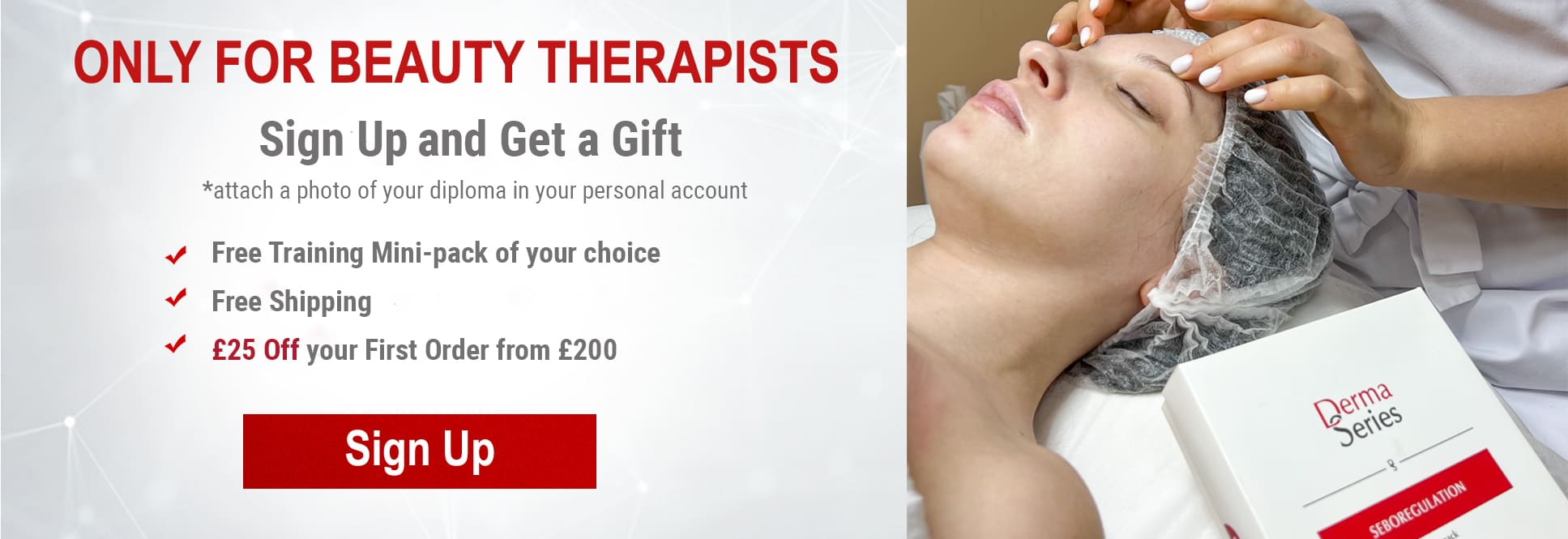One of the most frequent questions by both cosmetologists and patients: what cosmetic products can be recommended for pregnant and breastfeeding women?
Hormonal changes
Changes in the skin during pregnancy and lactation are primarily associated with hormonal levels. Peak progesterone production is reached by the 5th month of pregnancy, so most of the physiological changes in the skin become noticeable in the 2nd or 3rd trimester. Estrogens (estradiol, estriol and estrol) are formed in the placenta from dehydroepiandrosterone, which comes from the adrenal glands. The placenta also produces chorionic gonadotropin, placental lactogen, melanocyte-stimulating, adrenocorticotropic, thyroid-stimulating hormones, biologically active substances – relaxin, acetylcholine, as well as growth factors: fibroblasts, platelets, endothelium, epidermal growth factor, insulin-like and others. This increases the synthetic ability of dermal fibroblasts, respectively, and enhances the synthesis of collagen, elastin and hyaluronic acid. The skin looks fresh, full; a natural glow appears.
Changes are also observed in the pituitary gland, the thyroid gland, and adrenal glands. The production of cortisol and aldosterone, dehydroepiandrosterone in the adrenal glands increases. The pituitary gland produces an increased amount of gonadotropic hormones, alpha and beta melanocyte-stimulating hormones, that affect the process of melanogenesis.
Melanogenesis. Pigmentation in pregnant women
Sex hormones bind to G protein-associated receptors located on the surface of melanocytes. A special role is played by alpha-melanocyte-stimulating hormone (MSH), which is a derivative of pro-opiomelanocortin (POMC). POMC is formed in the anterior and middle lobes of the pituitary gland, as well as in keratinocytes in response to ultraviolet radiation and stress.
MSH binds to melanocortin receptors (MC1R). Then, adenylate cyclase is activated and the amount of cyclic adenosine monophosphate (cAMP) increases. It activates a cascade of events leading to melanin synthesis.
Thus, the intracellular mechanisms of increased melanin synthesis under the influence of ultraviolet radiation and sex hormones are the same, which can explain the appearance of skin pigmentation in pregnant women both in open and in closed areas of the body. As a result, melanin accumulates in the epidermis and in small amounts in dermal melanophages.
To prevent hyperpigmentation, it is recommended to use tyrosinase blockers. However, it is crucial to ensure that these blockers do not have a teratogenic effect and that their concentration does not exceed levels that could potentially enter the mother’s bloodstream and cause harm.
BRIGHTENYL® (BRIGHTENIL) – the result of deep research in the field of metagenomics, microbiology and biochemistry, safely provides protection against the expression of genes leading to melanin synthesis. It inhibits tyrosinase, which reduces melanin synthesis by 31%. In a dose/effectiveness ratio, Brightenyl is 60 times more effective than kojic acid! Pay attention to Melano-block Serum from reNeo cosmetics: Brightenyl, in combination with other brightening agents, gives excellent long-term results in the fight against hyperpigmentation.
Imbalance of estrogens and androgens: external manifestations
Estrogen receptors (alpha and beta) are expressed in keratinocytes, sebocytes, exorinal glands, blood vessels, and dermal fibroblasts.
In sebaceous hair follicles, estrogen beta receptors are located in the outer root sheath, hair papilla, matrix, stem cell concentration zone (bulge), basal and suprabasal sebocytes, but alpha receptors are located only in the hair papilla. The activation of estrogen receptors during pregnancy largely explains the physiological changes in hair growth and the activation of the sebaceous glands. There are much fewer receptors for progesterone, they are located in keratinocytes, sebocytes, T-lymphocytes. Often excessive production of sebum leads to inflammatory changes in the skin and the formation of comedones, both open and closed. However, in cases where a woman exhibited signs of excessive sebum production before pregnancy and experienced hormonal changes due to increased estrogen levels, it is possible for the hormonal imbalance to normalize during pregnancy. This can result in an improvement in the skin quality. Direct stimulation of sebocytes is caused by dihydrotestosterone (DHT), its excess leads to hyperproduction of sebum.
During pregnancy, the ratio of androgens and estrogens prevails in the direction of estrogens, thus relatively normalizing the work of the sebaceous glands. The skin is cleansed of comedones and inflammatory elements.
Skin changes are directly related to changes in hormonal levels. But the clinical manifestations of these changes largely depend on genetically determined factors, the current state of the skin, comorbidities and skin diseases before pregnancy and lactation.
Why is there a fear when it comes to choosing cosmetics or procedures for pregnant and breastfeeding women?
Of course, everything that circulates in the mother’s blood enters the child’s body. Especially when it comes to active ingredients used in cosmetology, such as retinol, high concentration of acids. All this can toxically affect the laying of tissues and organs in the fetus, enhance differentiation, stimulate cell growth, disrupt the development of organs and systems in the child.
Retinol
Retinol and all derivatives of retinoic acid, firstly, have high bioavailability and the ability to be absorbed into the bloodstream, even at low concentration. Secondly, retinol receptors are present on the surface of all epithelial tissue cells, which can speed up the work of all structures. Retinol has a teratogenic effect on the fetus, that is, it can lead to the development of congenital malformations.
Acids
Is it possible to use products with acids for pregnant and lactating women? It all depends on the concentration of the acid, the current state of the skin, its barrier function. It is important to remember that only soft acids, namely alpha-hydroxycarboxylic (ANA) at a concentration of up to 15% are not absorbed into the bloodstream and have only a local effect in the surface layers of the skin.
Reliable data on the rate of absorption of acids does not exist, since there are a huge number of factors that can contribute to the penetration of acids into the deeper layers of the skin and then enter the mother’s bloodstream. The safest choice would be superficial peels, that is, those that work within the epidermis, where, as you know, there are no blood vessels, which obviously excludes the process of getting into the bloodstream and further side effects, taking into account the implementation of the recommendations specified in the protocols. Choose superficial peels with a low concentration of fruit acids (glycolic, lactic, malic, mandelic) and beta-carboxylic acids (azelaic, salicylic).
The ideal choice is a combination of AHA with amino acids and regenerating components in peeling, which provides moisture-retaining, stimulating and regenerating processes. In Peel Expert Light combined peeling, the ratio of acid concentration and pH delicately allows for an effective procedure for both pregnant and breastfeeding women.
As part of daily nighttime home care, the use of acids is also acceptable, as long as the concentration of Alpha Hydroxy Acids (AHA) does not exceed 10%. The combination of fruit acids and enzymatic complexes will gently renew the keratinocyte pool, providing clear and healthy skin. The unique biotechnological enzyme KERATOLINE as part of Renewing enzyme AHA serum provides a delicate dissolution of intercellular bonds in the stratum corneum of the skin, uniform penetration of glycolic acid and plant extracts for antioxidant and regenerating action.
Answering the most worrying question, it is important to note that favourite active ingredients can be used to take care of pregnant and breastfeeding women’s skin. It is only necessary to take into account the teratogenicity of the component, the concentration of acids and the current condition of the skin.







